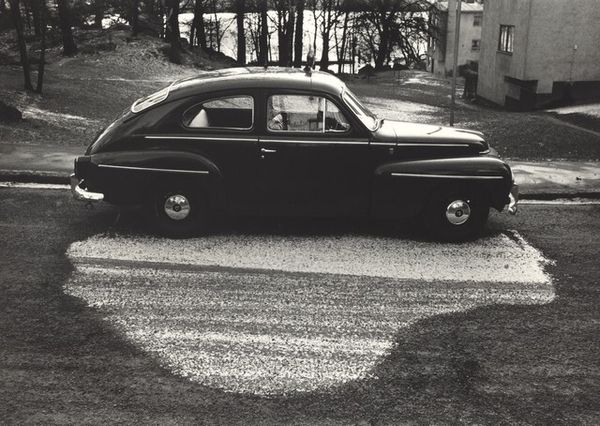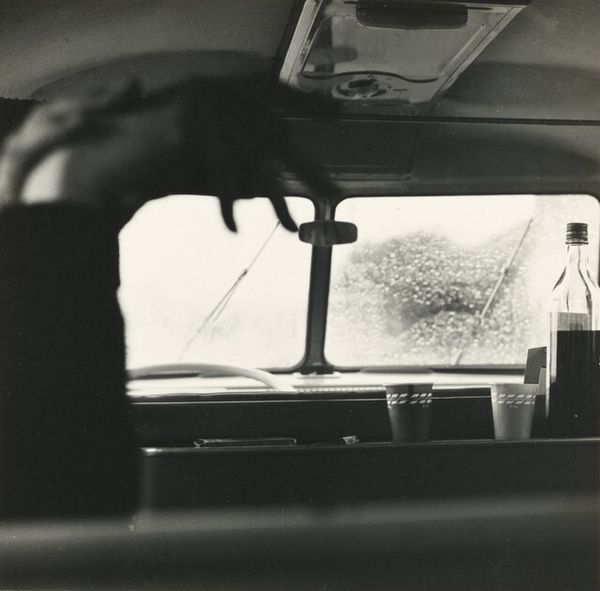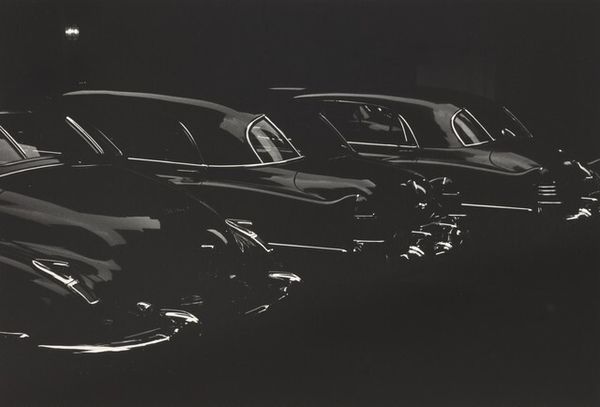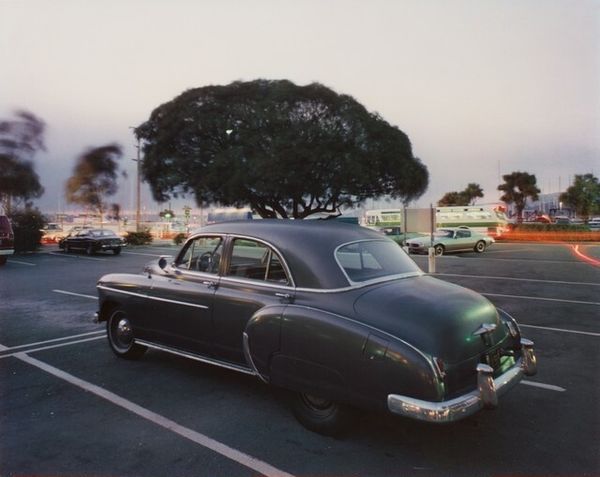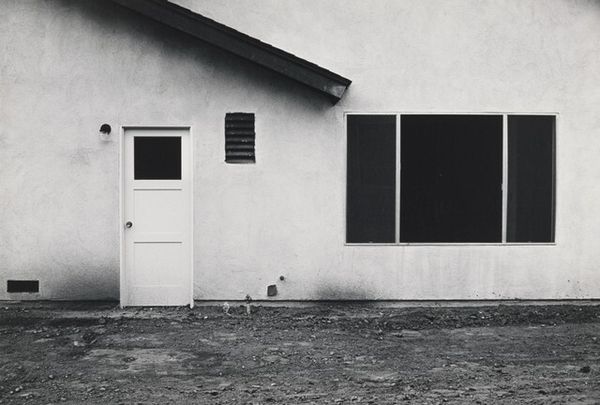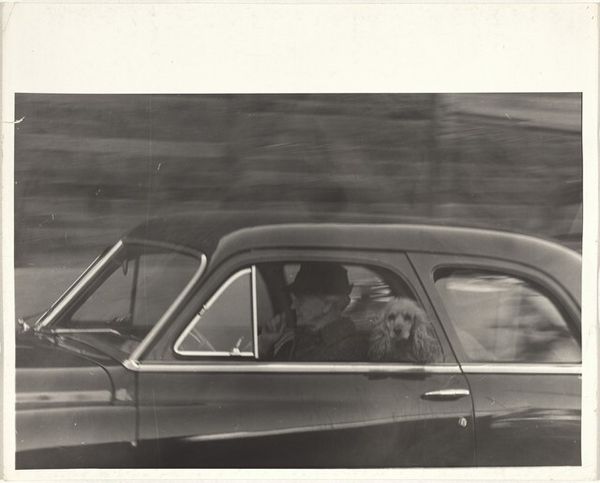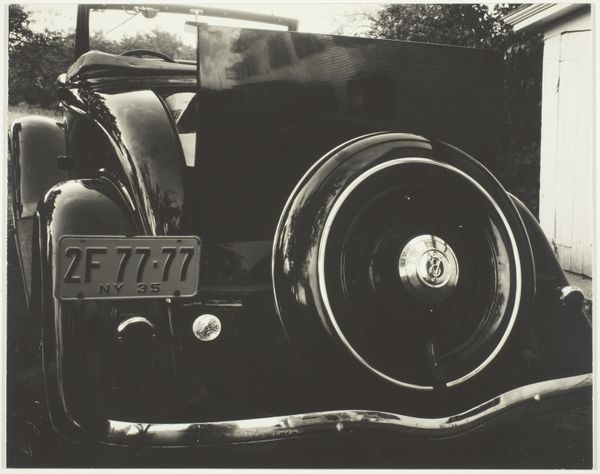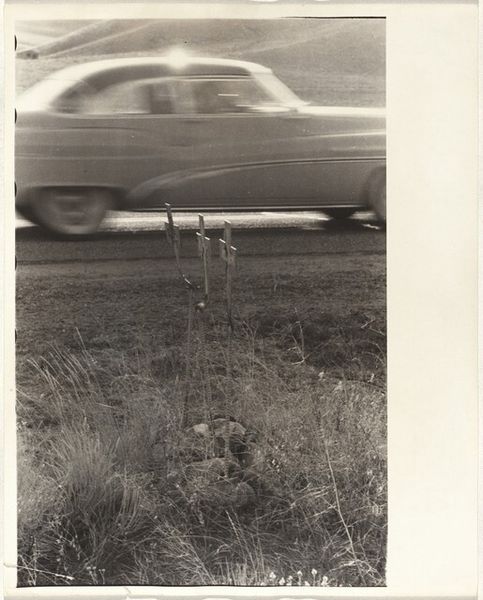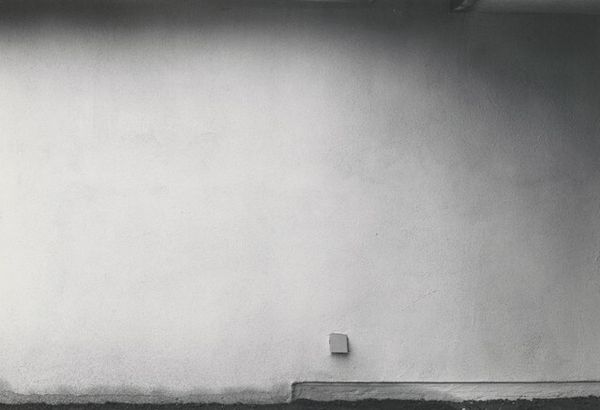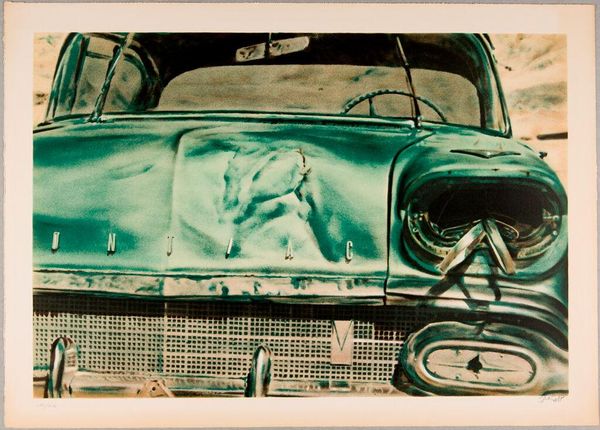
photography
#
vehicle design
#
vehicle photography
#
landscape
#
car photography
#
automotive design photography
#
street-photography
#
photography
#
monochrome photography
#
monochrome
#
modernism
#
monochrome
Dimensions: image: 5 3/4 x 8 7/8 in. (14.6 x 22.5 cm) sheet: 15.7 x 22.9 cm (6 3/16 x 9 in.)
Copyright: National Gallery of Art: CC0 1.0
Curator: Looking at Lewis Baltz's photograph, "Santa Cruz 1970B," from 1970, the starkness is immediately striking. It is austere. What are your initial thoughts? Editor: Bleak. The high contrast in monochrome really emphasizes the material decay and exposes how cars are produced for obsolescence. You get the feeling of post-war austerity. Curator: I see that. This is part of Baltz's exploration of the changing landscape of post-war America, particularly the impact of suburban development on the social and physical environment. Think about the social issues that might encompass. Editor: Definitely. We see the product of mass manufacturing. But beyond just consumerism, there’s the process of commodification itself, visible in every imperfection on the car’s surface. The artist uses materials here to critique our consumer behavior, right? Curator: Precisely! And this photograph really reflects a society grappling with questions of identity and value within the framework of modernism's promises and failures. The composition, dominated by the sheer mass of the blank wall and the solitary car, amplifies feelings of isolation. Editor: Right, and it reminds me also about the labor conditions behind car production and maintenance. They’re largely invisible, aren’t they, erased behind chrome and polish. Even a damaged car has traces of manufacturing and how much human work has gone into making it, right? Curator: The materiality acts as an index, directing our focus towards these underlying, often disregarded, systems. You feel the unseen hand. What is particularly moving for me is the questioning of who really benefits. Editor: Exactly. In Baltz’s image, the context makes this not simply an abandoned automobile but rather, through monochrome rendering, into a ghost that shows all the labor and production that it required to make. Curator: It's this critical engagement with both the medium and the subject that makes Baltz’s work so relevant for contemporary dialogues concerning power, representation, and social justice. Editor: Seeing the material truth embedded into art really adds a new level of questioning of how objects change our environments. Curator: Definitely—an understanding I hope our listeners take with them as they continue to view art with intention.
Comments
No comments
Be the first to comment and join the conversation on the ultimate creative platform.
